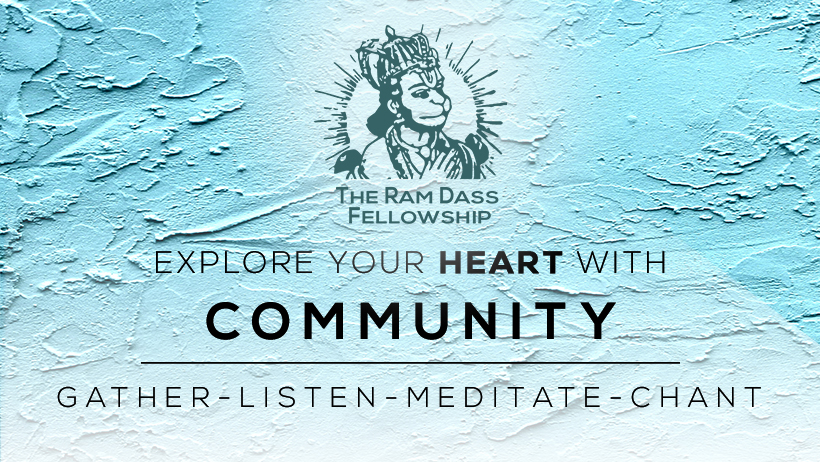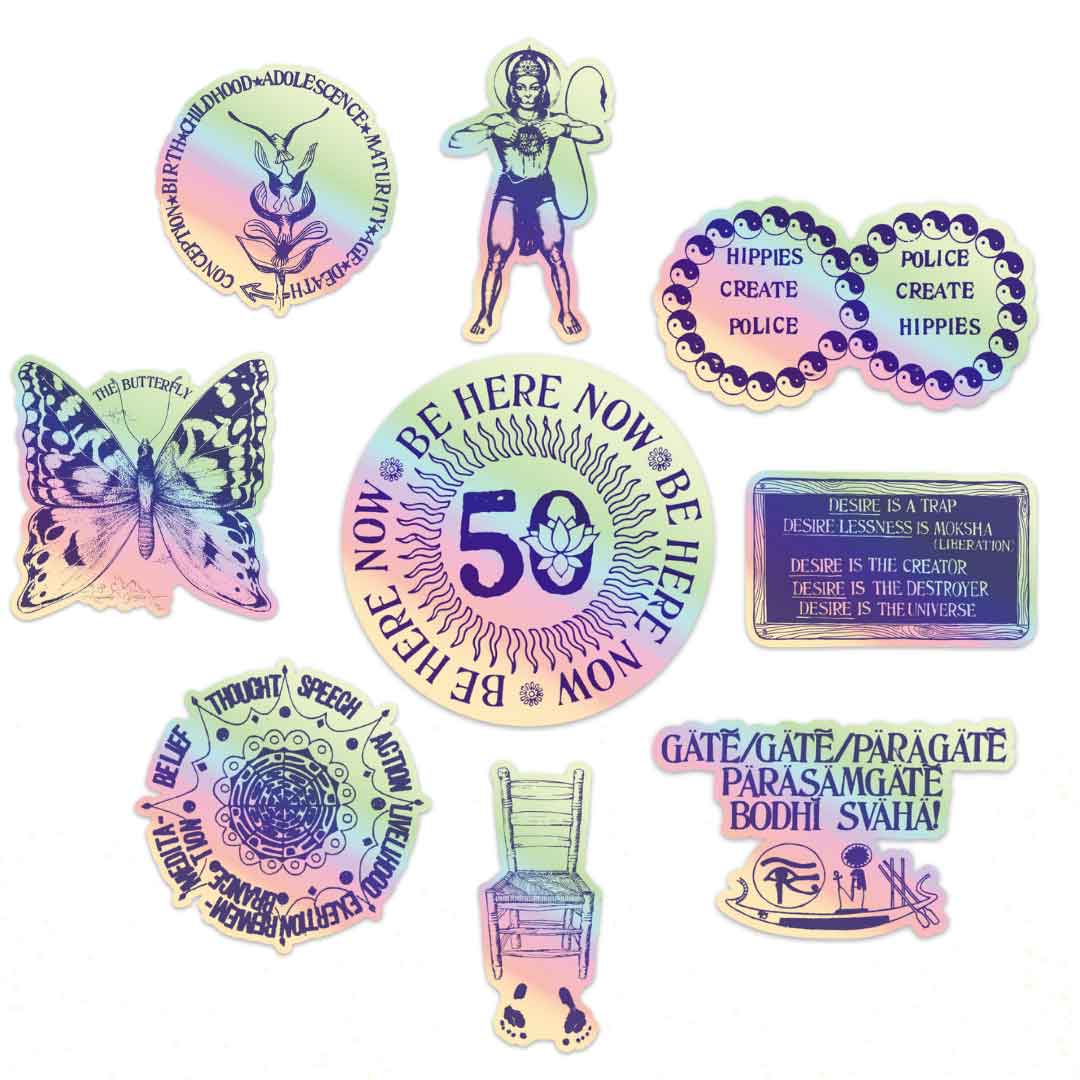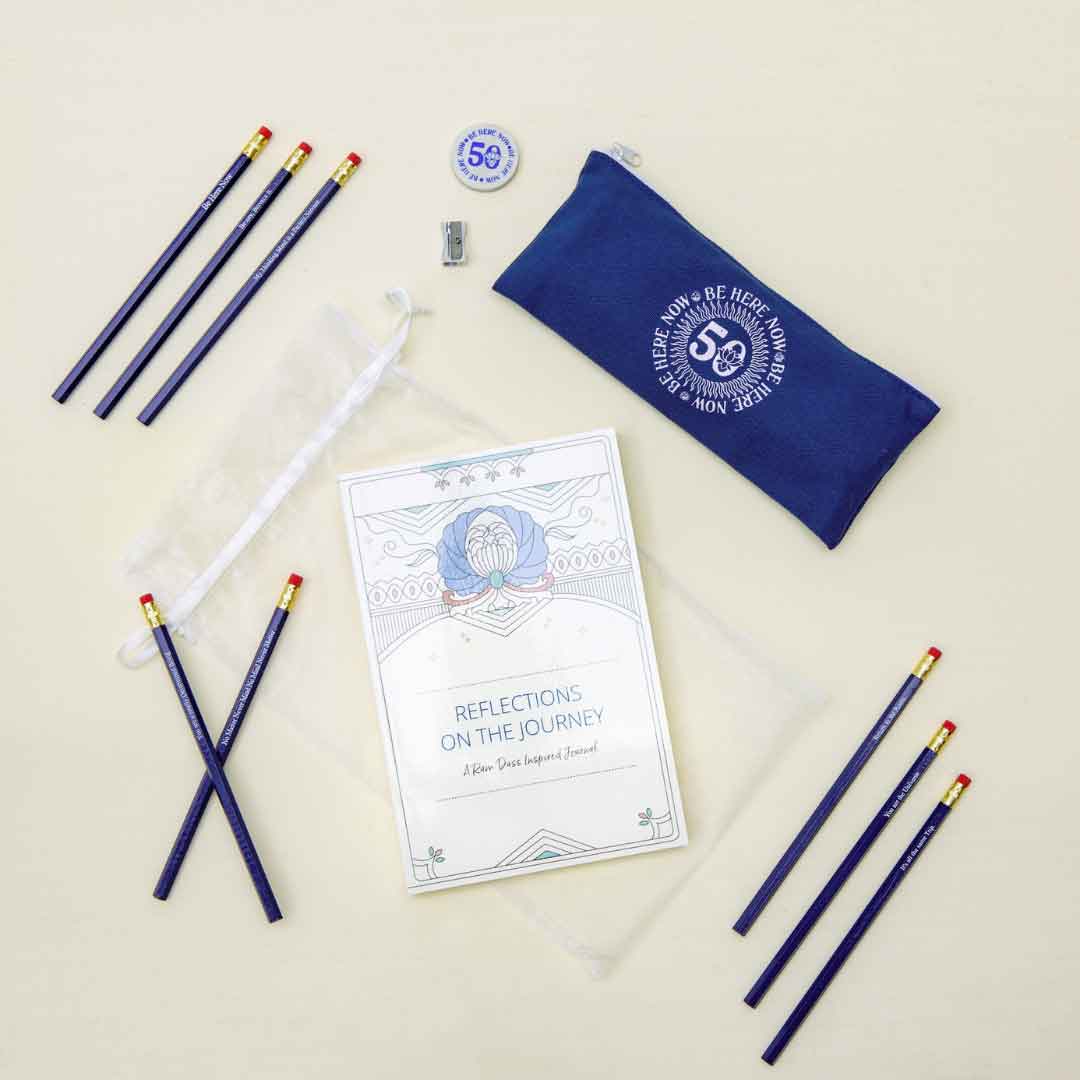
Celebrating 50 Years of Ram Dass's culture-transforming classic, Be Here Now
Take a look back at its alchemized inception, communal creation, and ongoing metamorphosis into 2021 and beyond...
Coined the 'Counter-Culture Bible' for generations of free-thinkers, yogis, hippies, meditators, spiritualists, bhaktas, psychonauts, somebodies, and nobodies, Be Here Now continues to inspire individuals to awaken their minds and open their hearts now 50 years since its first publication. We welcome you to celebrate the 50th Anniversary of Ram Dass' culture-transforming book by taking a historical dive into how Be Here Now came to be...
The Inception of the Phrase "Be Here Now"
To 'be here now,' first we have to go back there a little. It was a snowy Boston night in 1961 when Tim Leary invited Dr. Richard Alpert (Ram Dass) and Allen Ginsberg over to try psychedelic mushrooms. Dr. Alpert, a successful Harvard Professor, walked off into a dark room to quiet his mind, only to find himself in an escalating hypnagogic vision where he was asked to give up his roles as a professor, a son, an ego personality, and a body – leaving only pure awareness 'minding the store.'
"I felt a new kind of calmness – one of a profundity never experienced before. I had just found that ‘I,’ that scanning device, that point, that essence, that place beyond, a place where I existed independent of social and physical identity." – Ram Dass
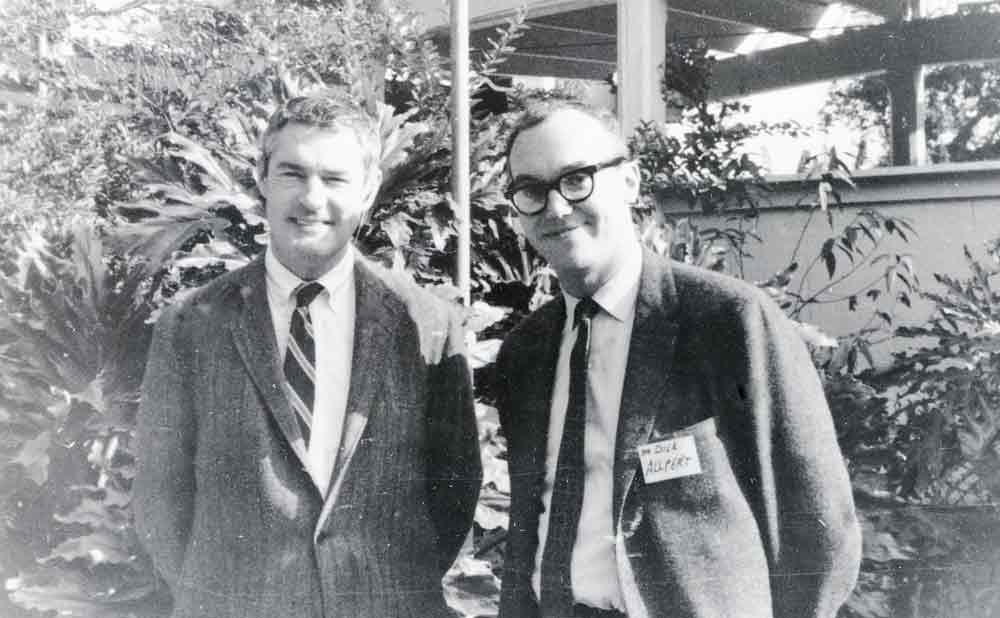
This timeless peak would spark cascading trips, experiments, research papers, news articles, lectures, light shows, contemplations, and difficult politics birthing from the Harvard psychedelic scene – with Leary & Alpert at the proverbial root. Diving full bore into consciousness expansion, these trips unearthed otherworldly experiences and transcendental wisdom. But Alpert noted: No matter how many psychedelics he took, what the dosage was, who guided him, and with what holy book—he still came down. Hitting wall after wall, Alpert began a quest to find "somebody who knew."
"I would go around and I'd meet all the holy men in the United States, and they were all groovy people. I mean, they were lovely people. And they all were deep and profound people. But they didn't know. They knew little bits and pieces, but they really didn't know." – Ram Dass
"I remember thinking and saying to Tim [Leary] one night in our office, 'Tim, do you suppose we're the farthest out people in the world living today?” He said, “I hope not.” And I shared that hope desperately." – Ram Dass
Having found immense congruencies between the visions from their psychedelic trips and Eastern philosophical literature—like The Tibetan Book of the Dead, which they rewrote for the West as The Psychedelic Experience—Alpert decided to take his search to India. With his Hunter S. Thompson style psychonaut pack of LSD, DMT, STP, and assorted others; Alpert traveled India "turning on holy men" to see if he could find someone "who knew" – or at least who could tell him what LSD was.
"A Tibetan Lama would take it and say, 'Hmm, very interesting. Anything else?' An old Theravada monk would take it and say, 'Got a terrible headache.' A Swami takes it and says, 'It's just like meditation.' Some young Lamas take it and say, 'Wow, that's the greatest!' Some sadhus take DMT, 'Can we get some more?' They sound just like Americans!" – Ram Dass

Witnessing himself unintentionally inverting into a shaman for holy men, Alpert was left right where he started – still searching for "someone who knew." Sitting despondently at The Blue Tibetan—a hippie restaurant in Kathmandu—Alpert was preparing to leave for a seminar in Japan with Alan Watts and Gary Snyder, when a striking young American named Bhagavan Das burst through the door.
"In walks a guy, an American. He's six foot seven. He has got a long beard and long hair, and he's wearing a white cloth, barefooted, and a mala... Immediately, he walked over to our table and sat down. I sensed something very special about this guy. The best way I can characterize what I sensed, was almost within a minute, I realized that while everybody else I had always met was looking – he knew. It was as if he was at the place. There was a different feeling about him. It was not like he was searching any longer." – Ram Dass
Feeling he was finally honing in on what he had traveled East for, Alpert canceled his plans for Japan, instead deciding to follow Bhagavan Das on journey through India, which would lead Alpert to first hear the words and learn the meaning of 'be here now.'
"All along this journey, this fellow, this strange Westerner, is slowly taking me over – my training. My feeling during this period is as if I am a newborn baby; that's all I can describe it as. He's buying the food, he arranges for our sleeping things, he tells me when to get up, he tells me where we're gonna go, he tells me where to sit, when to stand, how to go to the bathroom. He teaches me how to go to the bathroom like a Hindu, he tells me how to eat with my hand, 'Left hand for that and right hand for that—don't mix them up or you'll lose a hand if you put the wrong one in the communal pot.' And he's teaching me about my body, and I'm losing weight, and I've got rats, dysentery, and my bones... We're sleeping on wooden tables, because he's a holy man so he doesn't go to hotels, he doesn't go into restaurants. So, you sleep on the ground or you sleep on a wooden table. So, all my hip bones are black and blue, and it's really very painful.
But besides the body thing that's happening, he's working with my thought process. So, I'll say to him something like, 'How long do you think we're gonna be on the road?' And he'll say, 'Don't worry about the future; just live now.' So, we'd be silent for a while sitting on our boards, our wooden tables, and I'd say to him, 'Gee, this sure is strange in relation to the past. You know, when I used to...' He'd say, 'Don't think about the past; just be here now.' Well, my whole game, as you can see, I'm telling you about the past now. My whole lecturing routine, my whole social identity is either connected with the future or the past. I'm just passing through the present. Time is the thing, very important—where we're gonna go with psychedelics in the future, and all the interesting experiences I had in the past—and he didn't want to hear any of the interesting experiences! I mean, I was one of the most interesting people alive and he didn't want to know it!" – Ram Dass on Bhagavan Das and the inception of the phrase 'be here now'
Listen to Ram Dass tell this story of first getting the lesson to 'be here now,' on Episode 3 of the Here & Now podcast.

Be Here Now: Origins & Communal Creation
This impromptu months-long intensive in 'being here now' concluded at one of Neem Karoli Baba’s Himalayan temples with an uptight Richard Alpert tentatively following a weeping, sprinting Bhagavan Das up a hill to a little, old, Indian man wrapped in a blanket: Affectionately called Maharajji, he would crack Alpert's heart wide open through sharing unknowable facts of his life, along with other miracles and mystical moments that could only be explained through the abiding power of grace and unconditional love. Richard Alpert was brought to Maharajji's ashram in Kainchi, given the name Ram Dass – meaning 'Servant of God' – and put into an intensive sadhana training. It was here that he learned he would be writing a book:
"I was sitting in the temple in India, and the scene that was happening to me in India, the thing was so far out that I decided to take notes, as any good Westerner would. So, I was sort of keeping a secret little diary of 'You know what happened yesterday? Oh, wait until they hear about this back home!' And one day I got a message from the guru saying, 'Maharajji sends his ashirbad, his blessing, for your book.' I said, 'What book is that?' They said, 'Whatever book it is you're writing.' So, when I came back to the United States, I sat down at my typewriter responsibly, and wrote a book. And all the publishers turned it down. They said, 'Well, we've had a lot of run on these holy stories, and it's very interesting, but our line is filled for the season.' So, I thought, 'Well, obviously this must not be the book [Maharajji] had in mind, because if he's anybody, he's obviously the publishing company, and he's not gonna turn down his own book.' Takes a while for that to sneak up on you...
So, I figured I'd wait. And so, all the time these evenings were going on, people were taping them (See, pretty soon it gets so there's just a big row of microphones and just one man at the console. Sony has replaced people). And then there's this groovy woman in New York; Lillian North, who said it would be great for her sadhana to type these tapes, so she typed this fantastic stack of tapes. And then, we were out on the West Coast and this writer, John, was looking through the manuscripts, these tapes, and he says, 'There are two guys on these tapes. There's a heavy professor who's teaching; and then there's this far-out being that speaks now and then that comes out like an iambic pentameter. The heavy teaching is really a drag, but if we cut out all that it would really be beautiful.' So we cut it all out and we just put the high pieces together, and it reads like 'The Tao.' Because here we all are, and we're just saying, 'Yeah, wow, oh, ah, truth, light, beauty!' So we made this into a manuscript with 108 pages, obviously. And we decided we should hand rubber stamp them so that it would have a personal thing all the way through, each letter and painted artwork around it.
Then somebody said, 'If you're going to all that trouble of writing a book, you did this bibliography, would you include that?' 'Well, a bibliography in a book of Tao seems a little heavy, but okay, if you want it—you're us! Here we go.' Someone else said, 'Say, you've got these groovy pictures around your puja table. Could you include some holy pictures?' Would you put in two copies so we don't have to tear the book when we put them up on the wall?' 'Sure okay,' – include Ramakrishna, Ramana Maharshi, Christ, and Buddha, Moses, Hands of God, Mount Kailash, all the things. Then somebody said, 'You've got all these quotes from Holy Beings all around, would you include some of them?' 'Alright, we'll make up a set of cards and you can stick them up on your wall with quotes to wake you up. You can stick them all around your toilet in the morning.' You're standing up going to the bathroom and there's a sign that says, 'There's no doer.' That's a good one. Remember again here too. That's what mantra is about. When you live your life with mantra it's constantly saying, 'Wow baby, see how it is? Look what you thought you were doing.'
Then somebody said, 'There are a lot of things like methods of breathing, and the body, and getting it straight with diets and stuff like that. What we need really is a cookbook for psychic space. Could you add some of that stuff in?' 'Okay, we'll put that in.' Then somebody said, 'The original story of your trip to India, the groovy thing, I'd like to lay it on my parents, my parole officer. Could you put something in that I could give to my parole officer?' 'Okay, cool man, we'll put that in.' Then somebody said, 'The chanting is so beautiful and it would be groovy to get the Bhakti thing going. If we could only chant and do mantra. Could you maybe put one of those throwaway records in?' 'Okay, we'll put that in.' So then, it turned out that it wasn't a book anymore; it was a box. And the box is called, 'From Bindu to Ojas,' meaning—one way of saying—from sexual to spiritual energy, the raising of energy up the spine, the conversion of West to East to one. It's the awakening process, it's coming into higher consciousness.
So, at the moment there's a group of us in New Mexico, and California, and New York, and all around who are collaborating on this venture—all of us. And we're gonna do 20,000 copies of it, and we're gonna give it away. Because it's for us! That's Maharajji's book. It's his idea; it's not ours. We are just Hanuman, we're his servant. We're just doing it for him. This is all part of that process." – Ram Dass on the creation of Be Here Now
Listen to the Be Here Now creation story directly from Ram Dass, on Episode 182 of the Here & Now podcast.
Watch Below: Ram Dass unboxes 'From Bindu to Ojas' decades after it was created...
Maharajji's Be Here Now Printing Press Incident
Created through the connection of a community so fervently in love with what it was making, Be Here Now spread like dharmic wildfire in a 1970s kindling-culture so primed for a spark of authentic spirit. The hands-on multimedia experience presented in From Bindu to Ojas—the original box set containing Be Here Now—helped introduce generations to Eastern philosophy, yoga, meditation, self-inquiry, unconditional love, and the power of presence. With copies printed and more already set on the press, an in-India Ram Dass received jarring news directly from Maharajji about "lies being printed" in his book.
"I did Be Here Now; I gave a copy to Maharajji. It disappeared into the bowels of his inner world, and then about three months later he called me over and said, 'Ram Dass, you print lies!' I said, 'Maharajji, everything in that book is the truth.' 'Nahin! You print lies.' (This is a set up). He says, 'You say here that Hari Dass Baba built the temples.' I said, 'Well, I understood he did. I don't know who told me, but somebody had told me, and I put: Hari Dass Baba built the temples.' So he calls a guy over, 'Come here. Who are you?' The guy says, 'You know who I am Maharajji – I'm the man that builds all your temples.' 'Does Hari Dass Baba build the temples?' 'No, Maharajji. He helped me pour concrete, but he didn't build the temples.' 'Oh, go away.'
Maharajji said, 'You said here that Hari Dass Baba went into the jungle when he was eight years old.' I said, 'Well, I was told he went into the jungle when he was eight years old.' He calls a guy over, 'Who are you?' The guy says, 'I'm the head of the Forestry Department of India.' 'Do you know Hari Dass Baba?' 'Yes, he worked as a clerk in my office until 1963.' 'Huh, so he went into the jungle when he was eight years old?...’
He had all these kinds of people to prove that all these things were lies. They ended up being two-paragraphs of lies—which were not lies, merely I misunderstood. Somebody had told me these stories and I had printed them, and they weren't true apparently. Who would know? Would you care? This book is in English, it's in America. Who's to notice? Big deal... Maharajji says, 'Well, what are you gonna do about it?' I hadn't planned to do anything about it. I said, 'Well, I'll change it.' He says, 'You do that. As long as you think something is true there's no karma, but once you know it's false and you continue to print it, then there's karma.'
The book is being printed by a printing press company in Albuquerque, NM, and the publisher is our commune north of Taos up in the mountains, called the Lama Foundation. There's no telephone up there, so, I write a letter, 'I know you're about to do another printing of 30,000 copies. In the next printing would you delete the following two paragraphs about Hari Dass?' Now, by this time, to make the story more interesting, Hari Dass has been invited to Lama, and is the darling of Lama. They're never met Maharajji, so they're very angry that I'm asking them to take out these paragraphs about Hari Dass. So I get a letter back saying, 'We don't agree that they should be taken out; however, we would take them out, but when I got your letter, I had just gotten back from Albuquerque after two days on the road. And as I was leaving Albuquerque, the printer had put the job on the web press (which does the whole book at once). He had put all the plates on, and he was going to run it when I left. By now it's all run (it gets run and bound) and we would have to throw out about 30,000 copies to change those two paragraphs. So we'll change it in the next printing.' ...which is a reasonable thing to do.
The letter arrived in Nainital, which is up in the hills. I pick it up at the post office at around 7:30 in the morning just before I catch the bus out to the temple, which is eight miles away. I put the letter in my jhola, arrive at the temple, and walk in the temple. I'm walking towards Maharajji; Maharajji is screaming in Hindi, 'What does the letter say!? What does the letter say!?' Now, how does he know there's a letter? And if he knows there's a letter, he must know what it says... You can feel like you're being had somehow or other...
So I say to him, 'The letter says that the job has already been printed and they will change it in the next printing.' Maharajji looks at me out of the corner of his eye, and says, 'Do it now.' So I say, 'Well, Maharajji, you don't understand. 30,000 are all printed and the web press works this way, and it's all bound, and to do it now would be a loss of 72,000 rupees.' Maharajji says, 'Do it now. Money and truth have nothing to do with one another. Jao. Go do it.'
He throws me out of the temple. I'm not touching money in those days and I can't afford a bus, so I thumb up to town. I go to the cable office where I can send a cable and charge it... I send a cable to the Lama Foundation that says, 'This book, Be Here Now, is Maharajji's book. It came out of his ashirwad—his blessing—and if he says change it: you change it. Change it now, even if you have to lose all the money and throw away all those books. I'll make good to you later on the money you lose.'
I get a letter back from Steve Durkee at Lama about two weeks later, saying, 'The most interesting thing happened: When I went to the post office and got your cable, in the same mail was a letter from the printer. He had put the job on press, and as he was putting it on the last part, one plate was missing. So, he went back into his files where he had the whole original of the book to get the original page to make a new plate...and the original of that page was missing. Nothing else was missing. That page was a picture of Maharajji. Because the printer didn't know what to do, he took the whole job off of the press, and was waiting for further instructions.'
So the whole cost of this whole thing was one telephone call. But I had to go through the point where I gave up the thousands of dollars and learned the lesson. When I came back to tell Maharajji about it, he wasn't the least bit interested. I said, "Maharajji! The thing wasn't....!" And he acted like I was out of my head. " – Ram Dass on the Maharajji / Be Here Now printing press incident.
Listen to the Be Here Now printing press incident in Ram Dass' voice, on Episode 185 of the Here & Now podcast.
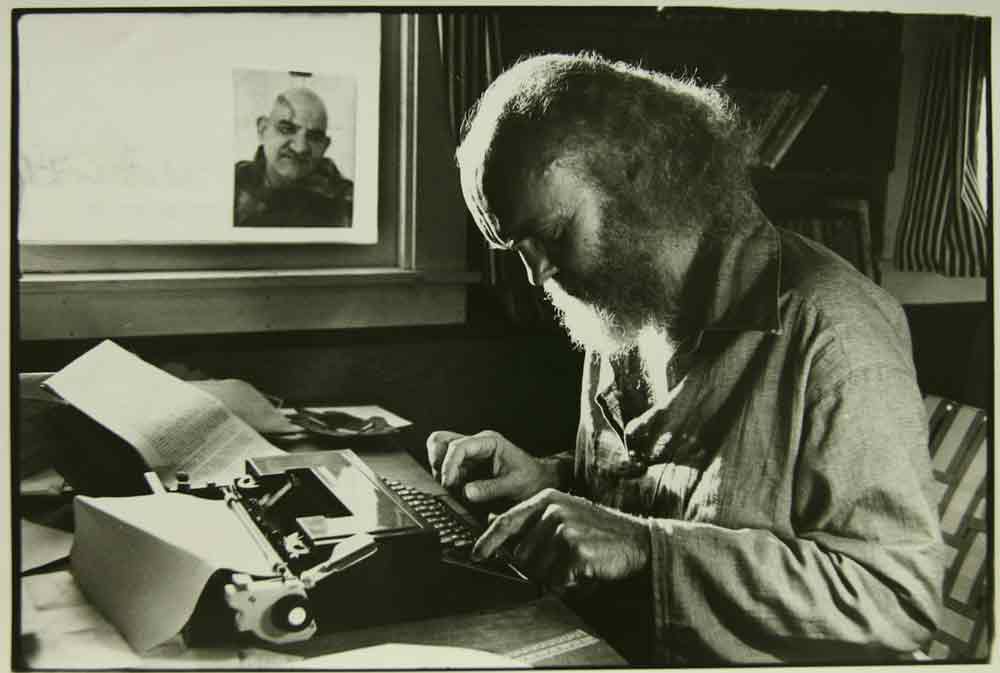
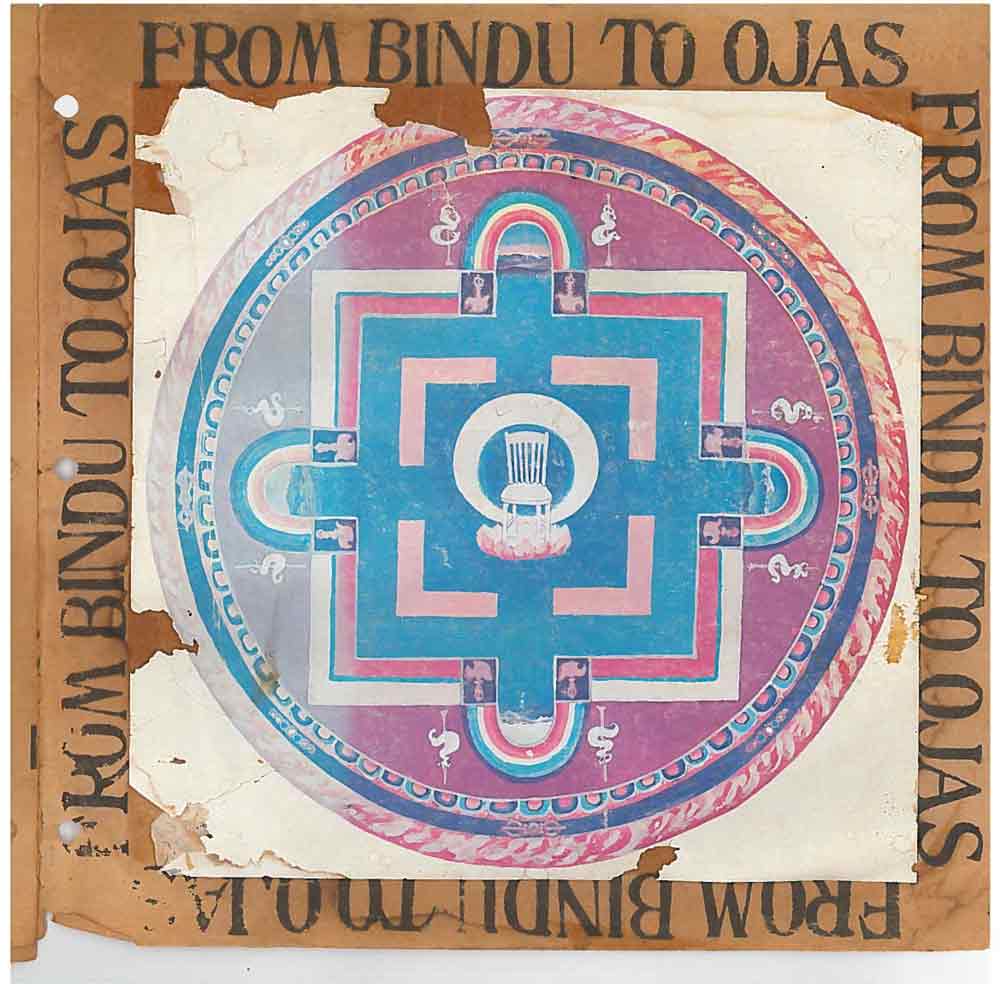
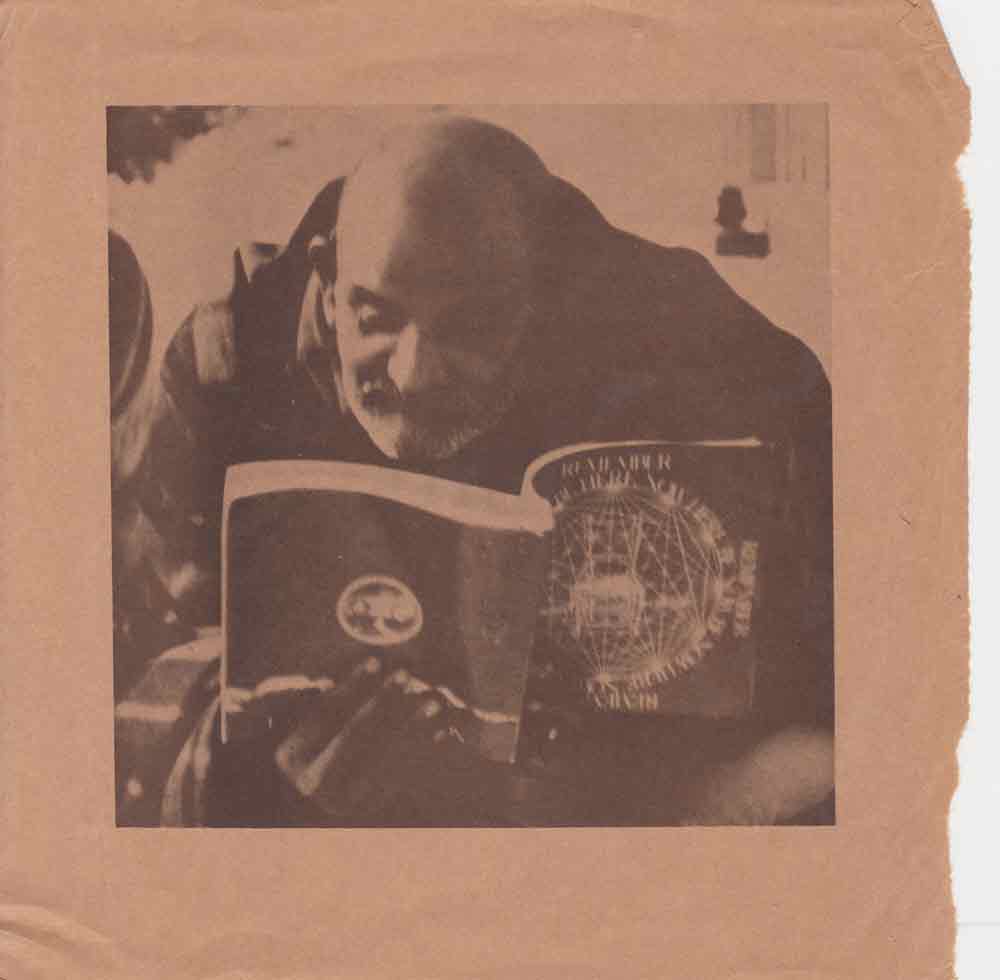
Be Here Now & Beyond
As the success of Be Here Now fanned Western interest in yoga and meditation, Ram Dass used his newfound notoriety in the budding scene to help fund service projects and build solid foundations for teaching careers for talented dharma friends like Sharon Salzberg, Jack Kornfield, and Joseph Goldstein.
“It was from those sessions teaching in Ram Dass’ class that seeded the interest in Vipassana all around the country. Jack Kornfield and I started getting invitations to teach retreats from people who had been there in those classes. So, in a way, Ram Dass really was the doorway to our whole teaching career.” – Joseph Goldstein
It was this yearning to "share a precious jewel" that first pulled Ram Dass back stateside to talk about Maharajji and offer the Eastern wisdom he learned—which made up the content of Be Here Now. Today, Ram Dass' legacy of sharing lives on. Be Here Now Network is home to Ram Dass' family of podcasts, including many old friends and some new faces inspired by his loving awareness teachings – keeping Be Here Now alive and updated for the digital age.
In a recent episode of the Mindrolling podcast, Raghu and Noah Markus discuss the 50th Anniversary of Be Here Now, offering insights not only into the history and creation of the book, but also how we can tangibly make 'being here now' a daily practice by using what we learned from Ram Dass' relationship to the present moment.
“There’s that place where the world just stops and you’re at ease in the moment, and that was a large part of what Ram Dass’ life work has been up until he left; it was to offer to everyone the opportunity to be in that moment.” – Raghu Markus
Join Raghu & Noah as they dive into the pages of Be Here Now, on Ep. 409 of Mindrolling
New Audio Download: Ram Dass Tells His Story

Journey: The Transformation - The Ram Dass talks that became Be Here Now
Celebrating 50 years of Be Here Now, Ram Dass’ spiritual opus, we are ecstatic to share the Original 1968-1969 Audio which created the ‘Our-Story’ section of his culture-defining classic. Unearthed by happenstance when our LSRF curator, Nathan Wilburn, recognized and connected the fresh-from-India talks from which Be Here Now was extracted, this audio talk outlines Ram Dass’ courageous shift from Harvard professor to psychedelic explorer, and his transformational journey East to the feet of his Guru, Maharaj-ji, the inspiration behind Be Here Now...
Wisdome: Be Here Now 50th Anniversary Celebration
Bringing it all back to the here and now, LSRF recently teamed up with the WISDOME LA for a dynamic 50th Anniversary Celebration of Be Here Now – featuring a daytime summit with Krishna Das, Jack Kornfield, Trudy Goodman, Nina Rao, Mirabai Starr, Pete Holmes, Rachael Fisher, & Raghu Markus; as well as an evening concert featuring Krishna Das, East Forest, John Forté, Nina Rao, and Superposition (Boreta) & Nailah Hunter.
Right Here, Right Now: The Present Moment
When, Indian Saint, Ramana Maharshi was dying of cancer, his devotees pleaded with him, "Bhagwan, please don't leave us, please don't go." His infamous response, "Don't be silly; where could I go?" This was Ramana's dying lesson—the recognition that 'it's all right here; it's all here now; there's nowhere else to go but here.' This may seem like a big leap for some; but as Ram Dass explains: the fact is, you're already doing it.
"Fact is, you're right here now; you also happen to be [reading this quote]. Here and now is exactly where the place is. The game is so exquisite—where here and now is. I say to you, 'Where are you?' Say, 'I'm here.' 'What time is it?' 'It's now.' I call you around 3:15 tomorrow morning, 'Sorry to bother you. Where are you?' 'I'm...here...' 'What time is it?' 'Now...' 'Where do you think two weeks from next Thursday at 3:22, you're going to be?' I'll tell you. See, I know because I have great powers: You'll be right here, and it's gonna be right now. You're totally trapped. You can never go anywhere again. You can go out on the street…you think that's going somewhere?" – Ram Dass
Ram Dass illuminates that it's all right here and it's all right now, on Ep. 157 of Here & Now
The Practice of Being Here Now: Remembering
So if on one level, we're already doing it—we're already here and now—what's the big deal? The issue is: we forget – we get lost, we get caught, our minds cling. The solution? The name of the game is the word that hugs all four sides of the cover of Be Here Now: Remember. How does one remember to Remember? Practice.
"All the past and future—everything you always were is in this moment. All of your commitments for the future are in this moment. The fullness of this moment includes everything; it doesn't exclude. It doesn't exclude past and future. All we're dealing with is the problem that the human mind clings. The clinging of the human mind takes it into time and into space, and it takes it away from the fullness of the moment. So that in the most exquisite practice, like the practice of Vipassana, one keeps extricating oneself from identification with thoughts about past and future by noting them and then coming back to the present moment. The reason the breath is so good to work with is it's always around, it's right there, and it's easy." – Ram Dass on the practice of 'being here now'
Dive into a Ram Dass lecture on spiritual practices and entrapments of mind, on Ep. 98 of Here & Now
Practice Below: Ram Dass Guides a Meditation called "Just This"
Be Here Now in 2021: The Big Ram Dass
After spending many years steeping in Ram Dass' presence, Raghu Markus—whose life has been dedicated to sharing Ram Dass' loving awareness wisdom—has been able to boil down the practice of "being here now" to what he views as its core essence:
"Just be kind, loving, compassionate. To think about enlightenment and all that stuff is fun to study, but the reality is turning ourselves to the point where once we do get to that presence and all of what it represents, then we can just relax and be of some use to people around us because we're not thinking about ourselves. That's the biggest thing around 'be here now' – you stop thinking about yourself." – Raghu Markus
This was the effect Ram Dass had on those he met: he stopped thinking about himself, thereby allowing pure unfiltered love to come through. This was the 'becoming nobody' he talked about so often, the 'just this' from the video meditation above, his 'loving awareness' teachings from his time on Maui, and the essence of Be Here Now.
Now, in the recent wake of Ram Dass' passing, we celebrate 50 years since the multimedia From Bindu to Ojas box set containing Be Here Now first arrived on doorsteps. With Ram Dass continuing to inspire, we invite everyone to join in our Courses and Offerings, Be Here Now Network podcasts, Soul Land Records music, Fellowship gatherings, in-person Retreats, Concerts, Events, and our ever-flowing stream of virtual offerings from RamDass.org.
Sitting Around the Fire
Alchemizing Be Here Now into a living melodic realm, electronic producers Jon Hopkins and East Forest created the music meditation, Sit Around the Fire—featuring Ram Dass' voice accompanied by moving art from the original brown pages of Be Here Now. Watch the book come alive for a new era:
Watch Above: Jon Hopkins with Ram Dass, East Forest – Sit Around The Fire (Official Video)
Join Raghu, East Forest, & Jon Hopkins as they dive into their new collaboration, on Ep. 406 of Mindrolling.
All proceeds from these items go towards supporting LSRF's mission to continue the teachings of Ram Dass, Neem Karoli Baba and our family of teachers through free virtual offerings.
Gratitude, Presence & Loving Awareness
Looking back on the first 50 years since Ram Dass & Co' birthed Be Here Now from Maharajji's blessings, the revolutionary effect that these three simple words had on our culture cannot be overstated. Quietly transforming our hearts—one beat at a time—Ram Dass welcomed us all into the abiding presence of his guru, Neem Karoli Baba, by helping us uncover the loving awareness nestled in the yolk of our hearts.
And it all came through each of us opening the pages of a strange looking, blue, square-shaped book with the word "Remember" around the edges, and an empty chair netted in the center of the revolving words: "Be Here Now, Be Here Now, Be Here Now..." Thank you for turning the page. Namaste.
– Written by Ganesh Das Braymiller on behalf of the Love Serve Remember Foundation and the Be Here Now Network







